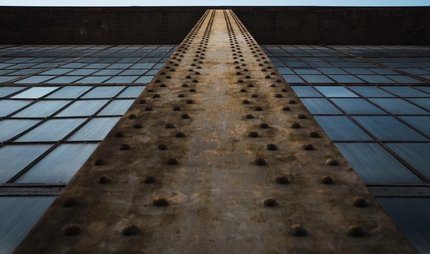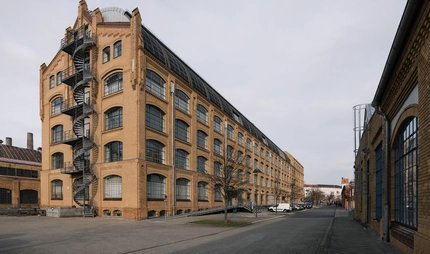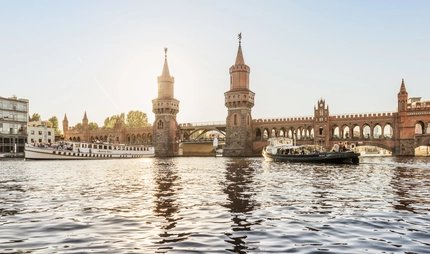
electricity substation Bergmannstraße
Once necessary infrastructure - today an industrial monument
In the 1920s, Berlin was not only the third largest city in the world, it also led the Second Industrial Revolution. Many of today's monuments to industrial culture are created in this period.
Electricity was the foundation for fundamental change. While steam power shaped 19th century industry, electricity replaced it in the 20th century. Electricity powered industrial machines and revolutionised local public transport.
Berlin was at the forefront in this development. AEG and Siemens were leading international electrical engineering companies. And a city was created here that glowed even in the dark thanks to electrification.
But electrification is a difficult task; it requires a huge infrastructure. Not only power plants that generate electricity, but also substations that reduce the voltage of the electricity – a technically necessary step so that end users in industrial plants, public institutions and private households can use electricity.

Current cubed
The Bergmannstraße substation with its characteristic cube shape was built by the architect Hans Heinrich Müller in 1929.
Müller, the in-house architect of the newly founded BEWAG (Berliner Städtische Elektrizitätswerke Aktiengesellschaft – Berlin Municipal Electricity Plants Company), designed a total of 40 substations during the 1920s, which formed the backbone of Berlin's electricity supply. Müller did not just want to erect purely functional buildings, he also stayed true to his architectural principles.
His modern signature is evident at the substation in Bergmannstraße: a steel skeleton structure, which Müller clad with red bricks. The architect was clearly inspired by the North German Gothic brick style.
Müller varied his designs to give each plant an individual look. The substation in the Bergmannstraße is characterised by its simplicity. While the former substation on Kottbusser Ufer is known as the "Cathedral of Electricity", Müller refrained from sacred allusions for his work on the Bergmannstraße. Expressionist elements, such as those he used on Kottbusser Ufer, are also completely absent.
The façade elements at the Bergmannstraße substation are restrained. Müller set the steel windows in the façade back slightly and surrounded them with vivid red. This created a clear relief. The design of the two functional units – the switch house and control room – as cubes connected by a steel bridge, is most striking.
The transformers once stood freely in front of the distribution station, however this can no longer be seen because the substation is no longer used to supply electricity. BEWAG has shut down many plants and sold them, including the plant in Bergmannstraße at the turn of the millennium. It was gutted between 2006 and 2008, it is now subject to a preservation order and has a new use as a medical centre.
More buildings by Hans Heinrich Müller
- MetaHaus, former electrical substation
- ewerk, substation Buchhändlerhof
- Substation Christiania, Osloer Straße
- Substation, Alte Jacobstraße
- Substation at Kottbusser Ufer

Grand Tour of Modernism
To mark the 100th anniversary of the Bauhaus in 2019, the Bauhaus Association developed a Grand Tour of Modernism that takes architecture fans all over Germany. The former Bergmannstrasse substation is part of this theme route.
The other Berlin locations as the Grand Tour of Berlin Modernism:
Grand Tour of Berlin Modernism
Our tips for the area around the former Bergmannstraße substation
The striking substation on the Kottbusser Ufer, Hans Heinrich Müller's "Cathedral of Electricity", can be reached by taking U-Bahn line 8 to Schönleinstraße. While in the Bergmannstraße area, you should not miss another highlight of Berlin's modernity: the former Tempelhof airport with the Tempelhofer Feld is located about one kilometre to the south and is today a popular area for recreation.
Practical information from visitBerlin
The best way to get to the former Bergmannstraße substation is to take U-Bahn line 7 to Gneisenaustraße or the U-Bahn line 6 to Mehringdamm. To explore the city, we recommend the Berlin Welcome Card for public transport.



